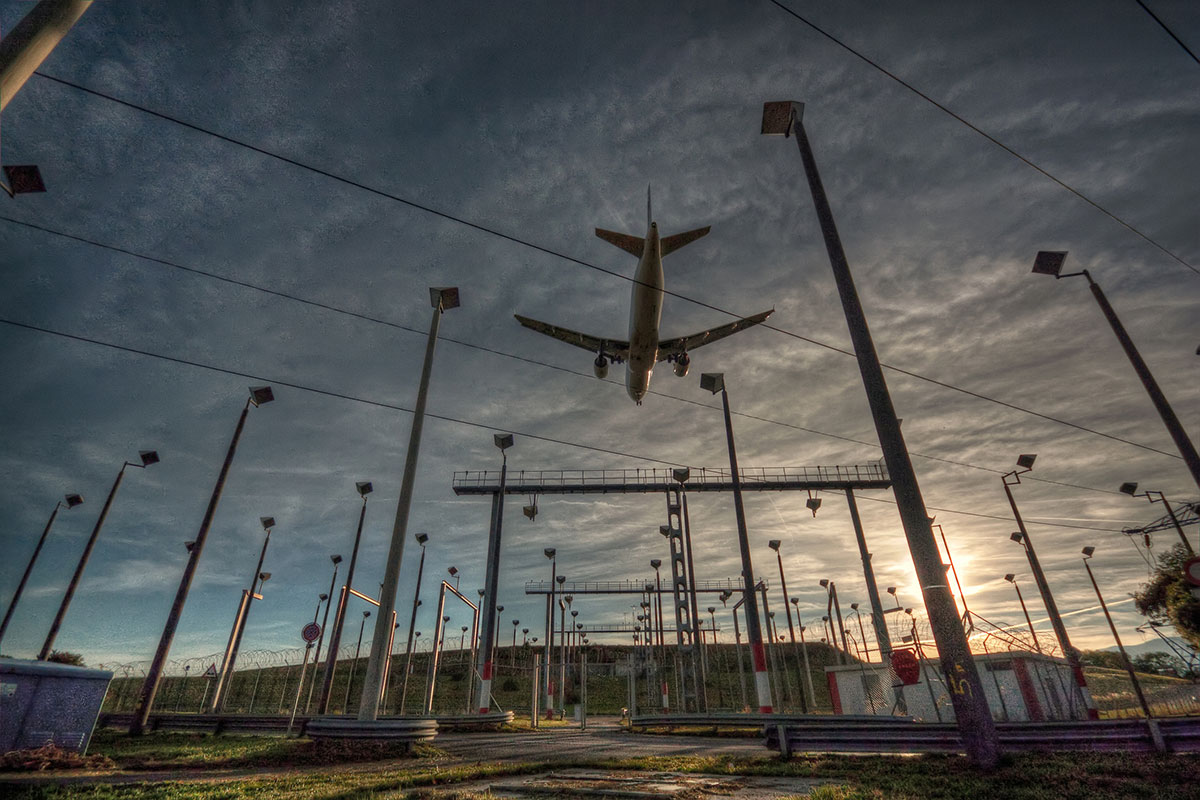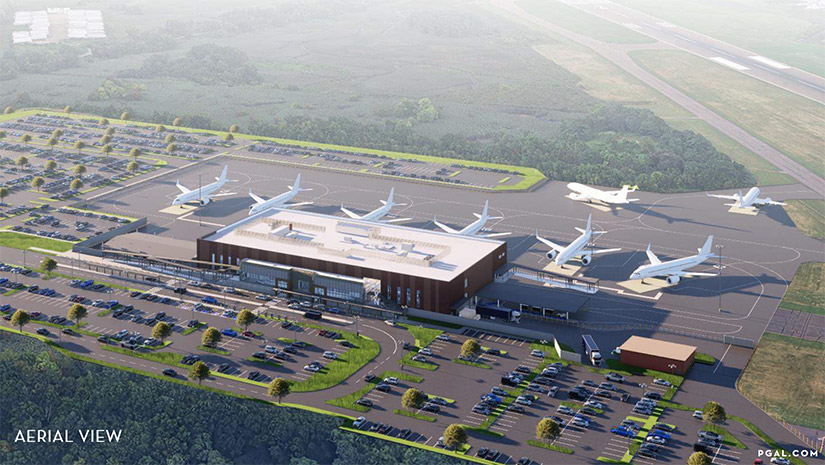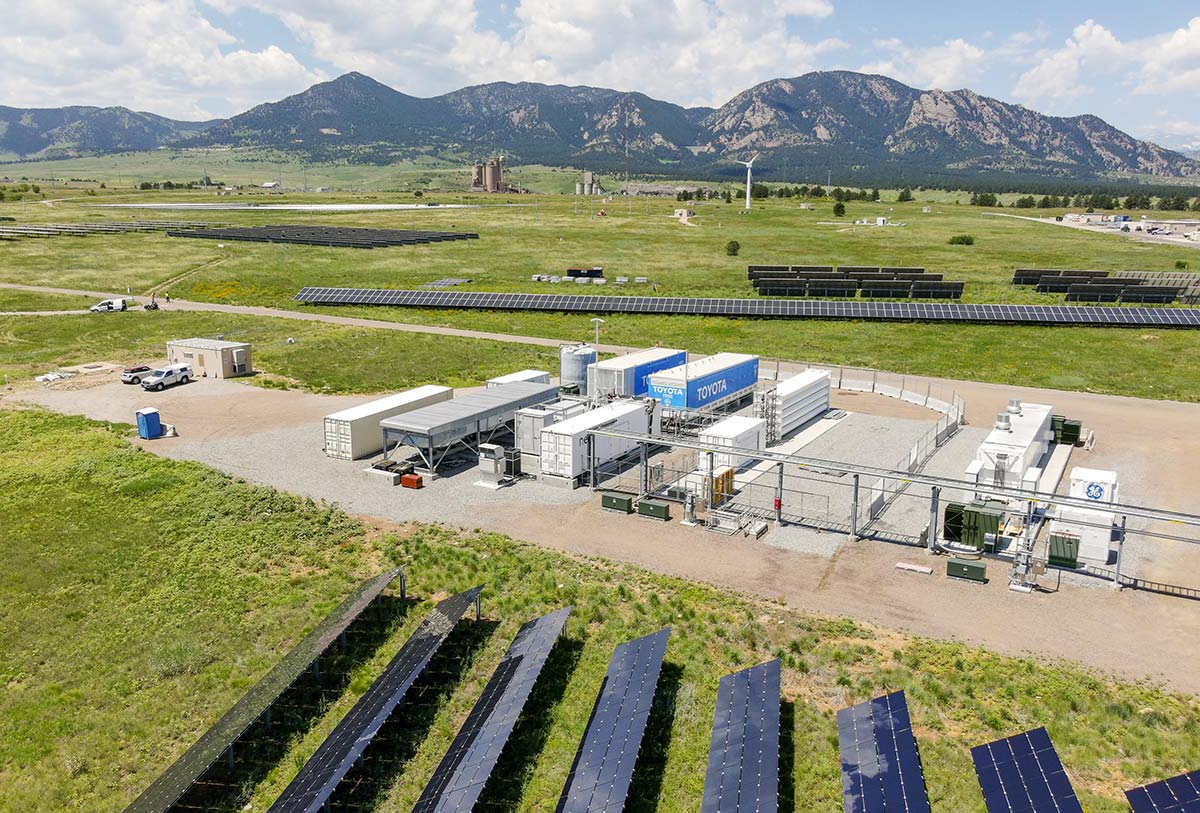Beyond Flights: Airports Could Bolster Grid Security and Adaptability
As Aviation Continues To See Greater Demand, NASA and NREL Show How Regional Airports Can Become Energy Nodes

Between fleets of rental vehicles and ground support equipment, electricity demand at U.S. airports might quintuple in the next 20 years.
Smaller regional and general aviation airports, which often have simple rural electric connections, are part of that overwhelming growth. Major airport electric investments are incoming, to say nothing of battery-powered electric aircraft that require substantial charging supplies on the ground.
With 30-year decision-making in the air, researchers at NREL, a U.S. Department of Energy national laboratory, are using the Advanced Research on Integrated Energy Systems (ARIES) platform and other capabilities to analyze energy options for airports, utilities, and public regulators. In many cases, they find a win-win for on-site energy generation and storage.
On-Site Power To Offset Costs
For any utility, a fivefold expansion in electric infrastructure is serious work. Adding new generation, lines, and substations quickly becomes an expensive project, especially with a regional airport budget. But NREL researchers say there might be a better way.
“Airports—which are often public entities—are figuring out whether there will be enough demand to pay for the infrastructure,” said Scott Cary, project manager of ports and airports at NREL. “To offset some of that cost and increase resilience, part of that conversation should be, ‘What should we generate locally?’”
On-site power from distributed energy resources can lower operating costs by letting airports sell electricity back into the grid. But perhaps more important to regional airports, the on-site resources can serve a local source of stability and energy backup: They can form energy nodes.
“Many of our small, rural airports have available land. Cost-effective distributed energy resources can potentially supply all loads and a majority of the charging loads at the airport. This could generate revenue while also helping the region with power reliability,” Cary said.
That value proposition could resonate with aviation stakeholders, but some may see it as a leap of faith. For that reason, NREL and the National Aeronautics and Space Administration (NASA) are evaluating the costs, policies, and operations in a research activity named Airports as Energy Nodes (ÆNodes). Starting with two partner airports, the research team will build a repeatable research model for the 5,000 other U.S. regional and general aviation airports to explore their energy horizons.
Exact Answers to Airport Energy Buildout
To get an idea for how regional and general aviation airports will become energy nodes, researchers at NASA and NREL simulated thousands of hypothetical flight itineraries in which electric aircraft offer short-distance service for high-demand routes relative to existing traffic. These results provided a baseline concept of electricity requirements and options, enabling the next stage of research: replicating the power systems of partner airports, including Winchester Regional Airport in Virginia and Tweed New Haven Airport in Connecticut.

“First, we’ve forecasted electric loads and mapped those to typical regional airport buildout. Next, we’ll look at the system in coordination with the utility and ask how we can make it better,” Cary said. “Where do we site energy assets? What adjustments to airport policies or configuration are needed? We can test those questions virtually with power hardware in the loop. We forecast electrical behavior, so utilities can see there’s a way to safely bring those assets online.”
The two airports, which are seeing continued growth, are expanding services including electrified aircraft, and NREL’s expertise and research capabilities will deliver confidence around those intrepid investments. A significant challenge is showing the utilities that the electric plan will work, and for that, NREL will use the ARIES platform.

With data from both airports and their respective utilities, researchers have modeled the partners’ electric systems and loads in detail. Soon, they will translate that information to real utility hardware with ARIES, which they can use to emulate charging fleets of electric aircraft and ground equipment. This will show how utility components handle large loads and surprise disruptions. It will also show how airport electrical systems can be configured for local use: as a source of energy backup and potential economic revenue.
“ÆNodes is about easing the transition for the aviation, utility, and greater airport ecosystems. By looking at this now, we are identifying potential solutions proactively to improve resilience from economic, energy, and transportation perspectives,” Cary said.
Gates Are Closing, Prepare for Takeoff
Given the harmony between electric aircraft and short-distance flights, and constant developments in aviation technology, the next steps at airports could be consequential. NREL and NASA want to make sure aviation decision makers can see clearly down the runway.
“Electric aircraft are in certification—now is the time to prepare,” Cary said. “There is a whole adoption cycle for getting a network in place and scaling it to the demand that airports expect to see. NREL can help airports make those decisions effectively.”
By NREL’s analysis, airports can optimize the value of their energy investments by building local generation—like battery storage—and by supplying electricity back to the local grid to bolster its reliability. To realize this vision of airports as energy nodes, NREL will show that transformative electrical buildouts are safe and valuable and will utilize insights from its partnership with the Federal Aviation Administration around electric aircrafts.
“ÆNodes is focused on all loads at an airport. We’re taking the results from electrical emulations to the utility and saying, ‘Here’s the load, and based on your system, you can do it in this way,’” Cary said. “Then we can apply the same model from airport to airport.”
Learn more about NREL’s aviation, energy security and resilience, and broader transportation and mobility research.
Last Updated May 28, 2025
